But isolation didn’t deter our fellow space explorers. The students contributed to updates of a mineralogical database, improved machine learning algorithms and the Electronic Field Book, and gave valuable feedback on space applications.
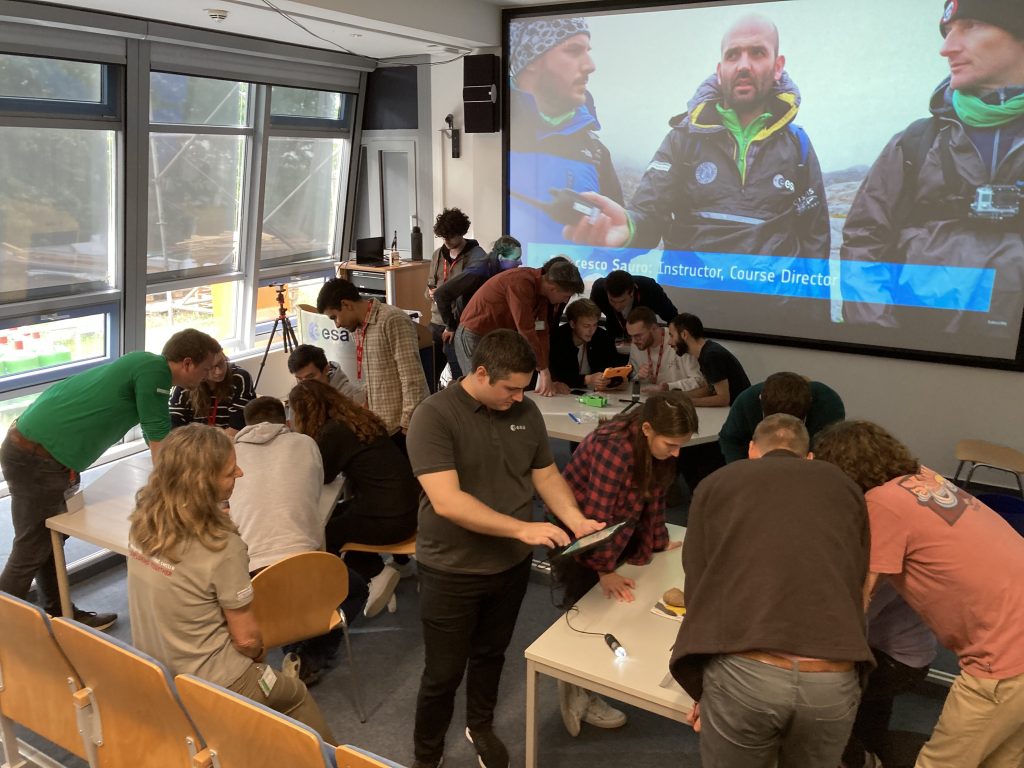
This week they got the chance to see the fruits of all their hard work for themselves, and most importantly, why it really matters.
This is an account of their impressions, written by them, after two days of packed space activities at ESA’s home for astronauts.
Day 1
After a year and a half working from home for CAVES and Pangaea, we were finally able to see the European Astronaut Centre (EAC) in Cologne, Germany, and the people we have been working with for such a long time.
Thanks to a beautiful autumn rainfall, we missed almost every bus to make it to EAC on time. A warm welcome was followed by a quick tour around the training facilities.
One of the first things we came in touch with was astronaut training and the daily routine on the International Space Station (ISS). EAC is where the EUROCOM console room is connected to major ISS control centres all over the world, and we were able to see the schedule of ESA astronaut Samantha Cristoforetti for the day in real time.
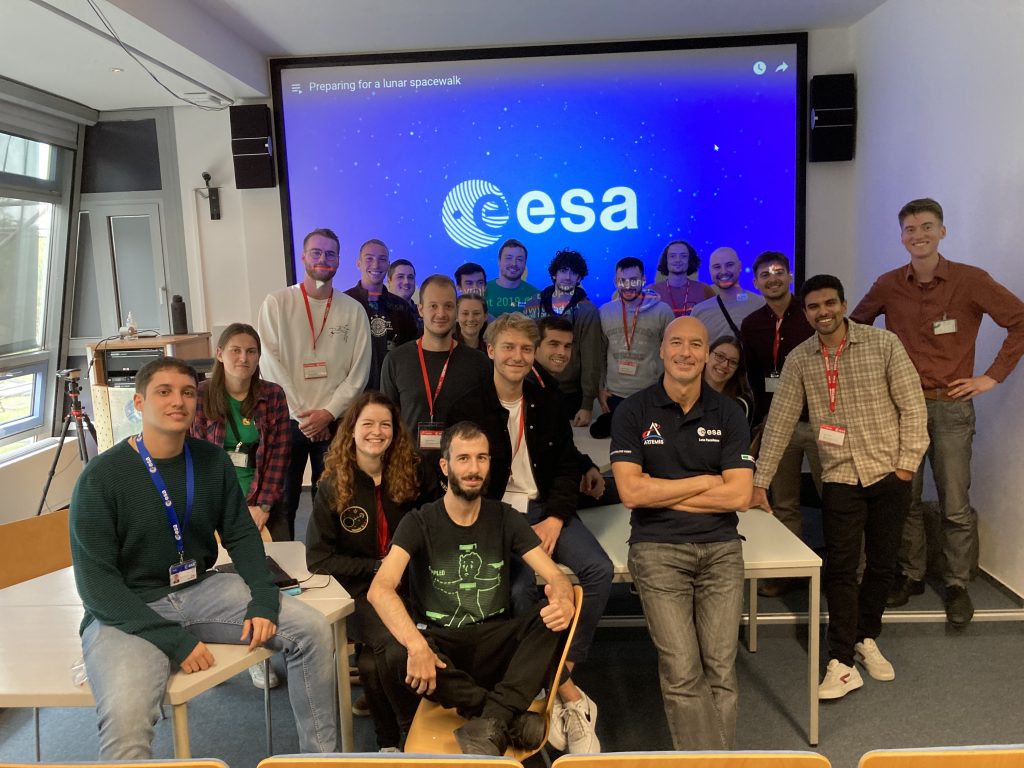
We learned a lot about how the body behaves in microgravity conditions at the German Aerospace Center’s (DLR) :envihab institute. We also found out that we can earn a salary by lying around for a month, for research reasons of course. It was surprising to see that a lot of the research that DLR does can be used outside of space applications and in everyday life. The effects of microgravity are similar to the ageing process, so maybe they could find the solution for eternal youth!
We discovered that the parking area at EAC will be partially employed for the construction of a brand new facility – LUNA is a project for an analogue Moon surface facility which will be used to train future astronauts. This way ESA will be able to test key technology for the Artemis programme. It will also be open to academic research.
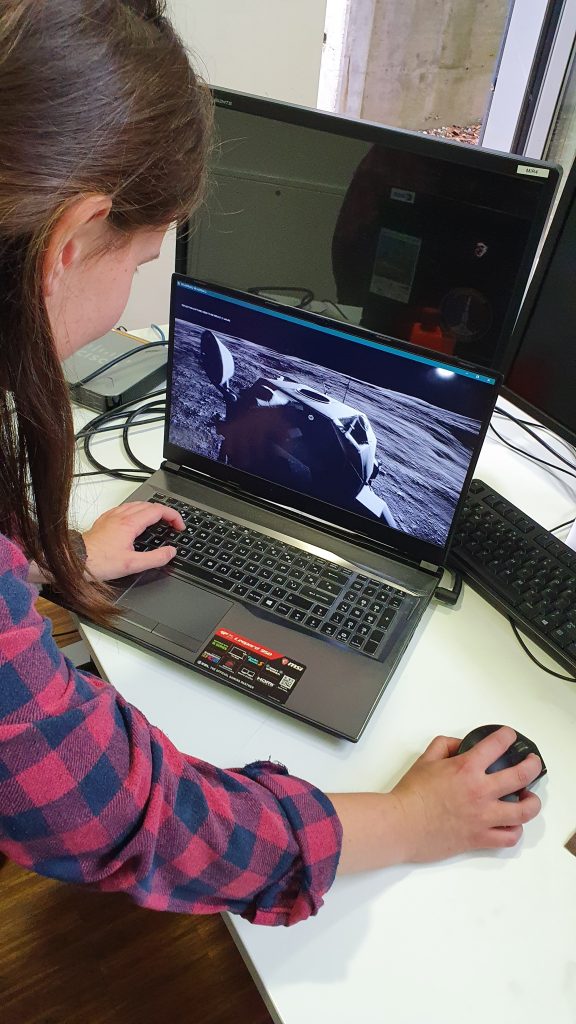
To refill our batteries, we were all invited to try the local food. German beer put us into orbit, we floated around the Schnitzel and Sauerbraten constellations, landed on planet Apfelstrudel and made a successful re-entry into our beds at the youth hostel.
Day 2
We travelled to the Moon with a slight detour through the International Space Station using Virtual Reality (VR). After bowling on the Moon, we attempted to manoeuvre our way around the Space Station without disappearing into the void. Most of us didn’t make it but the ones who did had a GREAT time.

For lunch, we microwaved some regolith with the help of the fellow Spaceship EAC team. Principal investigator Aidan Cowley talked about the “sintering” process of compacting and forming a solid mass of material, and how both are done at EAC. We also saw four working 3D printers and one under maintenance.
During the big bosses meeting, also known as the ESA’s Human & Robotic Exploration programme board, we snuck behind the delegates of the ESA Member States to hang around in the Columbus module. We tried sleeping as an astronaut but couldn’t find an optimal sleeping position. We imagined our life as astronauts and pretended to live on the International Space Station. We took a lot of selfies!
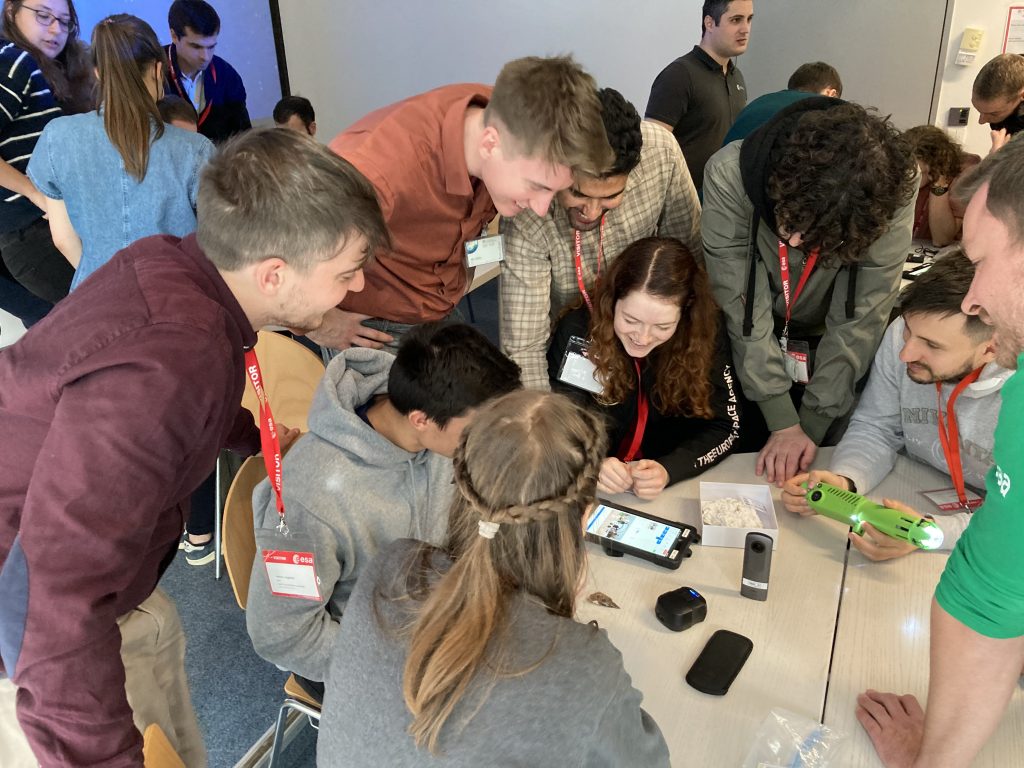
During the Electronic Field Book (EFB) traverse demo we got to see our combined work in action. It was super satisfying to see the newest results and experience them together in person. From mapping out stops to scanning minerals, and using machine learning to recognise their chemical composition, everything that was shown during the demo, as well as during the morning presentations, showcased all the developments from the past years.
The day was full of surprises, but the biggest of all were the unannounced group pictures with ESA astronauts Thomas Pesquet, Luca Parmitano and Frank de Winne.
Thank you ESA and to the CAVES and Pangaea team at EAC for organising this event!
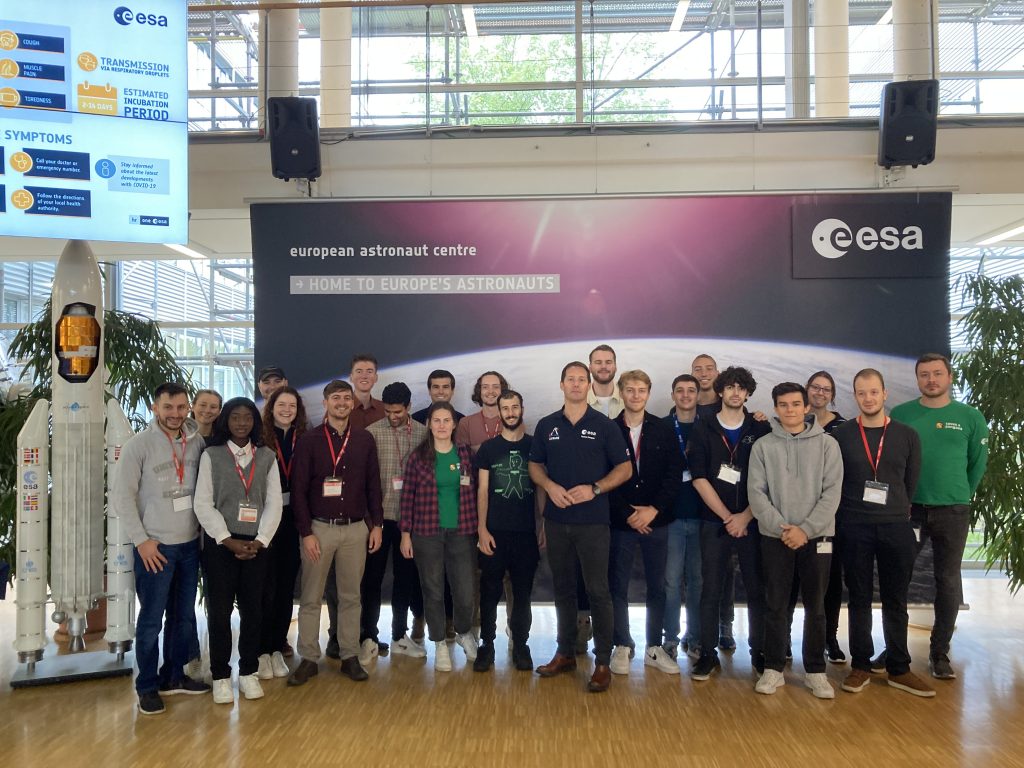
- Antonio Angellotti
- Magdalena Baranowska
- Gautier Bardi de Fourtou
- Christian Brozmann
- Antoine Capeyron
- Tommaso Comelli
- Axel Coulon
- Aurèle Dalibot
- Julien Delages
- Angel Dominguez
- Stefan Hill
- Alexandros Korres
- Mirte van Loenen
- Annika Christina Mikliss
- Federico Mustich
- Jonathan Sands
- Verena Sokoll
- Sam Taylor
- Fabio Venegas

Discussion: no comments